|
Books Should Be Free Loyal Books Free Public Domain Audiobooks & eBook Downloads |
|
|
Books Should Be Free Loyal Books Free Public Domain Audiobooks & eBook Downloads |
|
Literature |
|---|
|
Book type:
Sort by:
View by:
|
By: Anonymous | |
|---|---|
 English as She is Wrote
English as She is Wrote
"...Showing Curious ways in which the English Language may be made to convey Ideas or obscure them." A collection of unintentionally humorous uses of the English language. Sections of the work: How she is wrote by the Inaccurate, By Advertisers and on Sign-boards, For Epitaphs, By Correspondents, By the Effusive, How she can be oddly wrote, and By the Untutored. | |
By: Various | |
|---|---|
 Library of the World's Best Literature, Ancient and Modern
Library of the World's Best Literature, Ancient and Modern
The Library of the World's Best Literature, Ancient and Modern, is a work of enormous proportions. Setting out with the simple goal of offering "American households a mass of good reading", the editors drew from literature of all times and all kinds what they considered the best pieces of human writing, and compiled an ambitious collection of 45 volumes (with a 46th being an index-guide). Besides the selection and translation of a huge number of poems, letters, short stories and sections of books, the collection offers, before each chapter, a short essay about the author or subject in question... | |
 My First Book
My First Book
This is not a children’s book, as may be supposed from the title, but a collection of essays first published in The Idler magazine, in which over twenty well-known writers describe with characteristic style and humour their experiences in producing their first book… and getting it published. The book is profusely illustrated, not only with portraits of the authors, but also with scenes and illustrations from the books discussed. Authors include Jerome K. Jerome, R. L. Stevenson, Bret Harte, Rider Haggard, Rudyard Kipling, Sir Arthur Conan Doyle and Mary Braddon... | |
By: Unknown | |
|---|---|
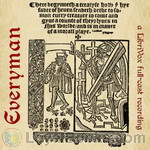 Everyman
Everyman
The Somonyng of Everyman (The Summoning of Everyman), usually referred to simply as Everyman, is a late 15th-century English morality play. Like John Bunyan's novel Pilgrim's Progress, Everyman examines the question of Christian salvation by use of allegorical characters, and what Man must do to attain it. The premise is that the good and evil deeds of one's life will be tallied by God after death, as in a ledger book. The play is the allegorical accounting of the life of Everyman, who represents all mankind... | |
By: Zane Grey (1872-1939) | |
|---|---|
 To The Last Man
To The Last Man
The story follows an ancient feud between two frontier families that is inflamed when one of the families takes up cattle rustling. The ranchers are led by Jean Isbel and, on the other side, Lee Jorth and his band of cattle rustlers. In the grip of a relentless code of loyalty to their own people, they fight the war of the Tonto Basin, desperately, doggedly, to the last man, neither side seeing the futility of it until it is too late. And in this volatile environment, young Jean finds himself hopelessly in love with a girl from whom he is separated by an impassable barrier. | |
By: Unknown | |
|---|---|
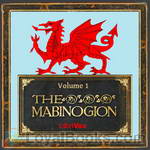 The Mabinogion
The Mabinogion
Sample a moment of magic realism from the Red Book of Hergest: On one side of the river he saw a flock of white sheep, and on the other a flock of black sheep. And whenever one of the white sheep bleated, one of the black sheep would cross over, and become white; and when one of the black sheep bleated, one of the white sheep would cross over, and become black. Before passing on to the Mabinogion proper, Lady Charlotte Guest devotes Volume I of her compilation of medieval Welsh tales to three brief romances of Arthur’s Court... | |
By: Harry Harrison (1925-) | |
|---|---|
 The Misplaced Battleship
The Misplaced Battleship
"It might seem a little careless to lose track of something as big as a battleship ... but interstellar space is on a different scale of magnitude. But a misplaced battleship—in the wrong hands!—can be most dangerous." The world class con man and thief known as the Stainless Steel Rat (diGriz) has another very big problem to solve and this science fiction novella by the great Harry Harrison will see if he can solve it and perhaps four or five more like it before this fascinating and funny tale is finished. 'Use a thief to catch a thief' sounds great but it sometimes has unexpected results. | |
By: Unknown | |
|---|---|
 Lords of the Housetops: Thirteen Cat Tales
Lords of the Housetops: Thirteen Cat Tales
The Lords of the Housetops reveals the cat through the creative lenses of 13 authors. Consequently, this carefully chosen collection of stories is as complex, charismatic and clever as a cat. | |
By: Asa Don Dickinson (1876-1960) | |
|---|---|
 The Children's Book of Christmas Stories
The Children's Book of Christmas Stories
Many librarians have felt the need and expressed the desire for a select collection of children's Christmas stories in one volume. This book claims to be just that and nothing more. Each of the stories has already won the approval of thousands of children, and each is fraught with the true Christmas spirit. It is hoped that the collection will prove equally acceptable to parents, teachers, and librarians. | |
By: Unknown | |
|---|---|
 Oscar Wilde: Art and Morality. A Defence of The Picture of Dorian Gray
Oscar Wilde: Art and Morality. A Defence of The Picture of Dorian Gray
“Who can help laughing when an ordinary journalist seriously proposes to limit the subject-matter at the disposal of the artist?” “We are dominated by journalism…. Journalism governs for ever and ever.” One of the nastiest of the British tabloids was founded a year too late to join in the moral panic generated to accompany Oscar Wilde’s court appearances in 1895. Yet there was no shortage of hypocritical journalists posing as moral arbiters to the nation, then as now. This compendium... | |
By: Richard Harding Davis (1864-1916) | |
|---|---|
 The Amateur
The Amateur
On the steamer on his way to London, Austin Ford meets a young woman, who is going to London to find her missing husband. Being a specialist in finding people, Mr. Ford agrees to help her in her quest. However, something appears to be not quite right about the lady and her story... | |
By: Unknown | |
|---|---|
 The Lock and Key Library
The Lock and Key Library
A collection of classic mystery and detective stories, collected and edited by Julian Hawthorne. Note: the second chapter of Dickens’ The Haunted House is not included in this edition. | |
By: H. Beam Piper (1904-1964) | |
|---|---|
 A Slave is A Slave
A Slave is A Slave
The Galactic Empire is slowly 'welcoming' into the family of civilized worlds those systems so far off in the backwater of the galaxy that they have been overlooked and ignored for the past 500 years or so. This is purely routine work because every planet offered the chance has eagerly accepted the invitation. Mainly because the enlightened Empire lets the planetary government continue to rule and do whatever it wants...with a few minor restrictions of course; and because the they are shown what happens to planets who decide not to accept the invitation... | |
By: John R. Musick (1849-1901) | |
|---|---|
 The Witch of Salem
The Witch of Salem
A Historical Novel about the Salem Witch Trials. A fantastic illustrated historical novel by the prolific American author John R. Musick From the author’s preface: The "Witch of Salem" is designed to cover twenty years in the history of the United States, or from the year 1680 to 1700, including all the principal features of this period. Charles Stevens of Salem, with Cora Waters, the daughter of an indented slave, whose father was captured at the time of the overthrow of the Duke of Monmouth, are the principal characters... | |
By: George Alfred Henty (1832-1902) | |
|---|---|
 Beric the Briton - A Story of the Roman Invasion
Beric the Briton - A Story of the Roman Invasion
My series of stories dealing with the wars of England would be altogether incomplete did it not include the period when the Romans were the masters of the country. The valour with which the natives of this island defended themselves was acknowledged by the Roman historians, and it was only the superior discipline of the invaders that enabled them finally to triumph over the bravery and the superior physical strength of the Britons. The Roman conquest for the time was undoubtedly of immense advantage to the people -- who had previously wasted their energies in perpetual tribal wars -- as it introduced among them the civilization of Rome... | |
By: Harry Harrison (1925 -) | |
|---|---|
 The K-Factor
The K-Factor
The human race has reached the stars, colonized many planets and done amazing things in all areas of scientific progress. But humans are still humans and remain both honorable and not so honorable; some with high ideals and others with very low ones indeed. So why hasn't war occurred in several centuries among the hundreds of planets? Has man really changed? Not on your life it hasn't! Read how science has given man peace but at what cost? | |
By: Anonymous | |
|---|---|
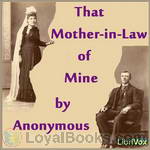 That Mother-in-Law of Mine
That Mother-in-Law of Mine
Here we were, only a month married, and spending our honeymoon at a most charming summer resort, where there was no excuse for getting out of patience. Everything was beautiful and attractive: Little hotel, strange to say, quite delightful; no fault to find with surroundings and accommodations; my darling Bessie, as sweet as an angel and determined to be happy and to make me happy; everything, in short, calculated to give us a long summer of delight. That is, if Bessie had only been an orphan. But there was her mother, who had joined us on our summer trip, after the first two weeks of unalloyed happiness, and threatened to accompany us through life. (excerpt from chapter 1) | |
By: Arthur Machen (1863-1947) | |
|---|---|
 The Great God Pan
The Great God Pan
"The Great God Pan" is a novella written by Arthur Machen. A version of the story was published in the magazine Whirlwind in 1890, and Machen revised and extended it for its book publication (together with another story, "The Inmost Light") in 1894. On publication it was widely denounced by the press as degenerate and horrific because of its decadent style and sexual content, although it has since garnered a reputation as a classic of horror. Machen’s story was only one of many at the time to focus on Pan as a useful symbol for the power of nature and paganism... | |
By: John Buchan (1875-1940) | |
|---|---|
 Huntingtower
Huntingtower
Dickson McCunn, a respectable, newly retired grocer, plans a walking holiday in the hills of south-west Scotland. He meets a young English poet and finds himself in the thick of a plot involving the kidnapping of a Russian princess, who is held prisoner in the rambling mansion, Huntingtower. This modern fairy-tale is also a gripping adventure story. | |
By: Unknown | |
|---|---|
 Humour of the North
Humour of the North
Some day an enterprising editor may find time to glean from the whole field of Canadian literature a representative collection of wit and humour. . . . The present little collection obviously makes no such ambitious claim. It embraces, however, what are believed to be representative examples of the work of some of our better-known writers, many of which will no doubt be quite familiar to Canadian readers, but perhaps none the less welcome on that account. | |
By: William Dean Howells, Mary E. Wilkins Freeman, Mary Heaton Vorse | |
|---|---|
 The Whole Family
The Whole Family
A 1908 NaNoWriMo forerunner, told in twelve chapters, each with a different author. The basic plot was to show how an engagement or marriage would affect and be affected by an entire family. The project became somewhat curious for the way the authors' contentious interrelationships mirrored the sometimes dysfunctional family they described in their chapters. The collaboration may have been an uncomfortable one, but a final product did emerge with some clever and entertaining contributions from its often squabbling authors. | |
By: Edgar Jepson (1863-1938) | |
|---|---|
 The Loudwater Mystery
The Loudwater Mystery
Lord Loudwater is found murdered in his house one evening. Unfortunately for Detective Flexen, who is to investigate the case, Lord Loudwater was not a very agreeable sort of fellow and almost every person in his vicinity had a motive for the crime. Was it his young wife or her lover, his former fiance or even one of the servants? | |
By: Emily Eden | |
|---|---|
 The Semi-Detached House
The Semi-Detached House
If you're a Jane Austen fan, you'll enjoy Emily Eden's comic novels of manners, The Semi-Detached House (1859) and The Semi-Attached Couple (1860). At the opening of The Semi-Detached House, the beautiful (but rather petulant) Lady Blanche Chester, newly married and pregnant, is being installed in a suburban house while her husband is away. Her encounters with her neighbors, and the intrigues of the neighborhood, soon come to absorb and annoy her. | |
By: William Shakespeare (1564-1616) | |
|---|---|
 Coriolanus
Coriolanus
Shakespeare was passionately interested in the history of Rome, as is evident from plays like Titus Andronicus, Julius Caesar, and Antony and Cleopatra. His tragedy Coriolanus was probably written around 1605-07, and dramatizes the rise and fall of a great Roman general, Caius Martius (later surnamed Coriolanus because of his military victory at Corioli). This play is unusual in that it provides a strong voice for the ordinary citizens of Rome, who begin the play rioting about the high price of food, and who continually clash with Coriolanus because of his contempt for plebians. | |
By: E.E. Smith (1890-1965) | |
|---|---|
 The Vortex Blaster
The Vortex Blaster
Uncontrolled, terribly violent Atomic Vortices are slowly destroying civilization on every human planet throughout the galaxy. Nothing can contain or stop them despite the lensmen's best efforts until one destroys the home and family of "Storm" Cloud, brilliant atomic physicist. The tragedy triggers actions on his part that pit him one-on-one against the horrible vortices. Introducing "storm" Cloud as THE Vortex Blaster | |
By: Zane Grey (1872-1939) | |
|---|---|
 The Heritage Of The Desert
The Heritage Of The Desert
Jack Hare is a young cowboy who was rescued from sure death by an old settler by the name of August Naab. Hare learns that Naab's ranch is a dangerous place and is challenged by cattle thieves and a corrupt rancher who is after Naab's water rights. The greatest danger Hare faces though, is over Mescal, a half-Navajo shepherdess who is already promised in marriage to Naab's first-born son. Hare must stop the marriage, but can't kill the son of his benefactor, August Naab...until a gun battle with rustlers brings the two face-to-face over drawn pistols. | |
By: John Buchan (1875-1940) | |
|---|---|
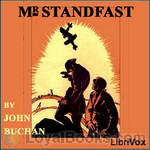 Mr. Standfast
Mr. Standfast
This is the third of Buchan's Richard Hannay novels, following The Thirty-nine Steps and Greenmantle. Set, like Greenmantle, durinig World War I, it deals Brigadier-General Hannay's recall from the Western Front, to engage in espionage, and forced (much to his chagrin) to pose as a pacifist. He becomes a South African conscientious objector, using the name Cornelius Brand. Under the orders of his spymaster, Sir Walter Bullivant, he travels in the book through England to Scotland, back to the Western Front, and ultimately, for the book's denouement, into the Alps... | |
By: Anthony Trollope (1815-1882) | |
|---|---|
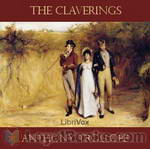 The Claverings
The Claverings
"I consider the story as a whole to he good, though I am not aware that the public ever corroborated that verdict." - the author The Claverings is the best wrought of the novels designed for The Cornhill, and as surely conceived as any book he ever wrote." - Sadleir. "It is a novel of atmosphere, and the atmosphere is of that sort very dangerous for the English novelist, the atmosphere captured so supremely well by Thackeray the green-lighted, close-scented gambling rooms, the shabby adventures of half-deserted spas, the shelving beaches of foreign watering-places, concealed accents, stolen passports, impoverished counts and impertinent ladies' maids... | |
By: Anonymous | |
|---|---|
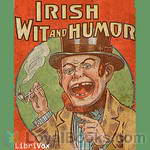 Irish Wit and Humor
Irish Wit and Humor
Excerpted anecdotes from the biographies of Swift, Curran, O'Leary and O'Connell, relating humorous snippets of politics in 18th and 19th century Ireland. For some these may be poignant in addition to being humorous and for others they may be humorous in addition to being poignant. ( | |
By: Ben Jonson (1572-1637) | |
|---|---|
 The Alchemist
The Alchemist
An outbreak of plague in London forces a gentleman, Lovewit, to flee temporarily to the country, leaving his house under the sole charge of his butler, Jeremy. Jeremy uses the opportunity given to him to use the house as the headquarters for fraudulent acts. He transforms himself into 'Captain Face', and enlists the aid of Subtle, a fellow conman and Dol Common, a prostitute. In The Alchemist, Jonson unashamedly satirizes the follies, vanities and vices of mankind, most notably greed-induced credulity... | |
By: H. M. Egbert (1879-1960) | |
|---|---|
 Jacqueline of Golden River
Jacqueline of Golden River
Jacqueline seems to have contracted a touch of amnesia, as she is found in an apartment with a dead man, and with a weapon in her hand. But she remembers nothing of any incident, remembers not her name nor where she comes from, not even why she is where she was found. She only remembers her father, and that he is in danger. Action and adventure soon follow, as Paul Hewlett and Jacqueline attempt to get answers to her questions, taking them on a journey into Quebec and points northward, and Paul knows that they are being followed during their trip... | |
By: Harry Harrison (1925-2012) | |
|---|---|
 The Repairman
The Repairman
This is a collection of 3 of Harry Harrison marvelous early stories that were published in Galaxy, Analog and Fantastic Universe. The Repairman (1958) is a straight fun SF story of a man getting a job done. It is most typical of his later style in series like the Stainless Steel Rat; Toy Shop (1962), a short piece exploring bureaucratic blindness and one ingenious way around it and The Velvet Glove (1956), my favorite for its writing style, fun perspective, sly social commentary on the scene in 1956 and just plain delightful imagination. And he manages to pack excitement and mystery in at the same time. | |
By: Frank R. Stockton (1834-1902) | |
|---|---|
 The Bee-Man of Orn and Other Fanciful Tales
The Bee-Man of Orn and Other Fanciful Tales
A collection of nine enchanting short stories filled with curious beasts and unexpected endings. Included are The Bee-Man of Orn; The Griffin and the Minor Canon; Old Pipes and the Dryad; The Queen's Museum; Christmas Before Last: Or, The Fruit of the Fragile Palm; Prince Hassak's March; The Battle of the Third Cousins; The Banished King; and The Philopena | |
By: Ray Cummings (1887-1957) | |
|---|---|
 The World Beyond
The World Beyond
Lee Anthony finds himself and two of his friends kidnapped and taken on a strange voyage. | |
By: Charles W. Diffin (1884-1966) | |
|---|---|
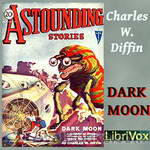 Dark Moon
Dark Moon
Mysterious, dark, out of the unknown deep comes a new satellite to lure three courageous Earthlings on to strange adventures. | |
By: Lloyd Eshbach (1910-2003) | |
|---|---|
 The Gray Plague
The Gray Plague
End of the world sci-fi tale borrows heavily from H.G. Wells' WOTW and In The Days of the Comet -- looks like fun ! | |
By: Molière | |
|---|---|
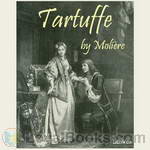 Tartuffe
Tartuffe
Jean-Baptiste Poquelin, known by his stage name Molière, was a French playwright and actor who is considered to be one of the greatest masters of comedy in Western literature. Among Molière's best-known works is Tartuffe or The Hypocrite, written in 1664. Though Tartuffe was received well by the public and even by Louis XIV, its popularity was lessened when the Archbishop of Paris issued an edict threatening excommunication for anyone who watched, performed in, or read the play.Tartuffe, a pious fraud who pretends to speak with divine authority, has insinuated himself into the household of Orgon... | |
By: William Shakespeare (1564-1616) | |
|---|---|
 The Rape of Lucrece
The Rape of Lucrece
The Rape of Lucrece (1594) is a narrative poem by William Shakespeare about the legendary Lucretia. Lucrece draws on the story described in both Ovid's Fasti and Livy's history of Rome. In 509 BC, Sextus Tarquinius, son of Tarquin, the king of Rome, raped Lucretia (Lucrece), wife of Collatinus, one of the king's aristocratic retainers. As a result, Lucrece committed suicide. Her body was paraded in the Roman Forum by the king's nephew. This incited a full-scale revolt against the Tarquins led by Lucius Junius Brutus, the banishment of the royal family, and the founding of the Roman republic. | |
By: Thomas Hardy (1840-1928) | |
|---|---|
 Wessex Tales
Wessex Tales
Wessex Tales is a collection of six short stories written by Hardy in the 1880’s. If you’ve never read Hardy they’ll serve as a good introduction to his writing. Though not as comprehensive as his major works they do contain all the ingredients that make him instantly recognisable. (Introduction by T. Hynes.) | |
By: Various | |
|---|---|
 Prefaces and Prologues to Famous Books
Prefaces and Prologues to Famous Books
Charles W. Eliot, 21st President of Harvard University, edited this volume of prefaces ... authored by a Who's Who of World Literature: Bacon, Calvin, Caxton, Condell, Copernicus, Dryden, Fielding, Goethe, Heminge, Hugo, Johnson, Knox, Newton, Raleigh, Spenser, Taine, Whitman and Wordsworth. Eliot wrote in his preface to these prefaces, "No part of a book is so intimate as the Preface. Here, after the long labor of the work is over, the author descends from his platform, and speaks with his reader as man to man, disclosing his hopes and fears, seeking sympathy for his difficulties, offering defence or defiance, according to his temper, against the criticisms which he anticipates." | |
By: Randall Garrett (1927-1987) | |
|---|---|
 A Spaceship Named McGuire
A Spaceship Named McGuire
Can a spaceship go crazy? Well, yes it can if it has a brain. And the new MG (magnetogravitic drive) experimental robot space ship does indeed have a 'brain'. Completely bewildered as to why the first six models of their supposedly perfect new ship model, the MG-YR, nicknamed the McGuire, have gone totally bonkers after activation and before they could ever be used, the company has called in the services of Daniel Oak. They suspect sabotage of course. Daniel Oak is the hard boiled private investigator with nerves of steel and a mind of the same substance... | |
By: Upton Sinclair (1878-1968) | |
|---|---|
 The Machine
The Machine
Upton Sinclair is best known for his novel The Jungle, an expose of the meatpacking industry. He was also a playwright whose works for the stage reflected the same progressive viewpoints found in his other writing. In The Machine, published as part of Sinclair's 1912 collection Plays of Protest, Socialist activists show a rich man's daughter the truth about the society in which she has been raised. | |
By: Robert Louis Stevenson (1850-1894) | |
|---|---|
 New Arabian Nights
New Arabian Nights
New Arabian Nights is a collection of short stories which include Robert Louis Stevenson's earliest fiction as well as those considered his best work in the genre. The first and longest story stars Prince Florizel of Bohemia who appears in the later collection of stories "More New Arabian Nights: The Dynamiter." | |
By: Susan Warner (1819-1885) | |
|---|---|
 Diana
Diana
Diana Starling is the beautiful and quiet daughter of a cold and mentally abusive mother. She falls in love with Evan Nolton, but her mother wishes her to marry someone else. Yet, despite her mother's strong objections, she chooses her own husband. However, she can be truly happy only if she forgets her first love. Will she find the strength do do that? (Introduction by Stav Nisser) | |
By: Nathaniel Hawthorne (1804-1864) | |
|---|---|
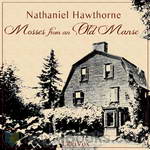 Mosses from an Old Manse
Mosses from an Old Manse
"Mosses from an Old Manse" is a short story collection by Nathaniel Hawthorne, first published in 1846. The collection includes several previously-published short stories and is named in honor of The Old Manse where Hawthorne and his wife lived for the first three years of their marriage. A second edition was published in 1854, which added "Feathertop," "Passages from a Relinquished Work, and "Sketches from Memory."Many of the tales collected in "Mosses from an Old Manse" are allegories and, typical of Hawthorne, focus on the negative side of human nature... | |
By: Howard Pyle (1853-1911) | |
|---|---|
 Twilight Land
Twilight Land
The room was all full of twilight; but there they sat, every one of them. I did not count them, but there were ever so many: Aladdin, and Ali Baba, and Fortunatis, and Jack-the-Giant-Killer, and Doctor Faustus, and Bidpai, and Cinderella, and Patient Grizzle, and the Soldier who cheated the Devil, and St. George, and Hans in Luck, who traded and traded his lump of gold until he had only an empty churn to show for it; and there was Sindbad the Sailor, and the Tailor who killed seven flies at a blow,... | |
By: Theodore Dreiser (1871-1945) | |
|---|---|
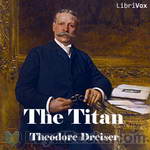 The Titan
The Titan
Cowperwood moves to Chicago with his new wife Aileen. He decides to take over the street-railway system. He bankrupts several opponents with the help of John J. McKenty and other political allies. Meanwhile, Chicago society finds out about his past in Philadelphia and the couple are no longer invited to dinner parties; after a while, the press turns on him too. Cowperwood is unfaithful many times. Aileen finds out about a certain Rita and beats her up. She gives up on him and has an affair with Polk Lynde, a man of privilege; she eventually loses faith in him... | |
By: William Shakespeare (1564-1616) | |
|---|---|
 Venus and Adonis
Venus and Adonis
Venus and Adonis is Shakespeare's narrative poem about the love of the goddess Venus for the mortal youth Adonis, dedicated partly to his patron, the Earl of Southampton (thought by some to be the beautiful youth to which many of the Sonnets are addressed). The poem recounts Venus' attempts to woo Adonis, their passionate coupling, and Adonis' rejection of the goddess, to which she responds with jealousy, with tragic results. This recording features three different readers performing the narration, Venus, and Adonis. | |
By: Barry Pain (1864-1928) | |
|---|---|
 Eliza
Eliza
A gentle, yet deliciously humourous series of anecdotes following the life of the main character and his wife, Eliza. | |
By: Anonymous | |
|---|---|
 True Stories of Wonderful Deeds
True Stories of Wonderful Deeds
37 short pieces perfect for newer recorders. These one page Stories of (mostly) Wonderful Deeds were written for Little Folk to teach them about famous incidents in their history. Bonnie Prince Charlie, Nelson and Hardy, Bruce and the Spider, David Livingston, Canute, Sir Philip Sydney, and Elizabeth and Raleigh are just some of the well known people and incidents covered in short stories. | |
By: John Lang (1816-1864) | |
|---|---|
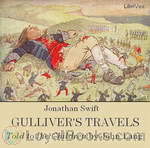 Gulliver's Travels, Told to the Children
Gulliver's Travels, Told to the Children
This is a children's version of Jonathan Swift's novel Gulliver's Travels, from the Told to the Children Series (published in 1910). The children's adventure story covers Gulliver's visits to the lands of Lilliput and Brobdingnag. | |
By: Maurice Leblanc (1864-1941) | |
|---|---|
 The Crystal Stopper
The Crystal Stopper
During a burglary at the home of Deputy Daubrecq a crime is committed, and two accomplices of Arsène Lupin are arrested by the police. One is guilty of the crime, the other innocent, but both will be sentenced to death. Lupin seeks to deliver the victim of a miscarriage of justice, but struggles against Deputy Daubrecq's ruthless blackmailer, who has an incriminating document hidden in a crystal stopper. | |
By: Richard Harding Davis (1864-1916) | |
|---|---|
 The Lost House
The Lost House
Austin Ford, the London correspondent of the New York Republic, is spending some idle time in the American Embassy chatting with the Second Secretary, when suddenly a note is brought in. This note is an appeal for help, found in the gutter in a dark alley. The writer claims to be a young girl, who is kept against her will locked up in a lunatic asylum by her uncle. Although the Second Secretary tries to convince him that there is nothing to it, the journalist is determined to follow the lead... | |
By: Charlotte Turner Smith (1749-1806) | |
|---|---|
 The Old Manor House
The Old Manor House
The proud, cruel and arrogant Mrs. Rayland never married. Therefore, "Rayland Hall", the old Manor House of the title, had to pass to their heir, Somerive, whom they never treated kindly. According to the British laws at the time, the heir must be the oldest son. But what is to be done when the second son is more worthy of it - and is more beloved by Miss Rayland herself? And must the fact that he is in love with a servant and dependent of Miss Rayland take its toll? | |
By: Charles H. Spurgeon (1834-1892) | |
|---|---|
 The Treasury of David, Vol. 2 (Abridged)
The Treasury of David, Vol. 2 (Abridged)
Charles Spurgeon was a British Particular Baptist preacher who remains highly influential among Christians of different denominations, among whom he is still known as the “Prince of Preachers”. In his lifetime, Spurgeon preached to around 10,000,000 people, often up to 10 times each week at different places. He was the pastor of the congregation of the New Park Street Chapel (later the Metropolitan Tabernacle) in London for 38 years.Spurgeon was a prolific author of many types of works. His accessible commentaries on the Psalms are a combination of meditation and teaching and are appropriate for anyone wanting to understand these familiar poems on a deeper level... | |
By: Ellis Parker Butler (1869-1937) | |
|---|---|
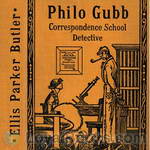 Philo Gubb, Correspondence-School Detective
Philo Gubb, Correspondence-School Detective
Philo Gubb, not being content with his job as wallpaper-hanger, has higher aspirations: to become a detective, just like Sherlock Holmes. To that end, he enrolls in a correspondence course, where he gets lessons through the mail as well as the necessary disguises for a detective. Philo Gubb, not being really clever or intuitive, or even looking good in those disguises, gets involved in one case after the other - and sooner or later happens to stumble on and solve the crime... Each of these stories... | |
By: Jack London (1876-1916) | |
|---|---|
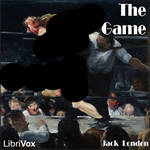 The Game
The Game
Jack London wrote at least four stories about boxing; A Piece of Steak (1909), The Mexican (1911), The Abysmal Brute (1911), and The Game (1905). The Game is told, in part, from the point of view of a woman, the fiancée of one of the competitors. This is to be his last fight and they are to be married on the morrow. Against her better judgment, she agrees to watch the bout. (Introduction by Tom Crawford) | |
By: Eleanor H. Porter (1868-1920) | |
|---|---|
 Miss Billy Married
Miss Billy Married
At the opening to this second sequel to Miss Billy (Miss Billy, Miss Billy's Decision, Miss Billy Married), we find Bertram and Billy finally at the altar. Will wedded bliss ensue and are the patter of little feet on the horizon? Or is misunderstanding and heartache in the cards again? Find out in Miss Billy Married! | |
By: Stendhal | |
|---|---|
 The Red and the Black, Volume I
The Red and the Black, Volume I
Stendhal - a German pen-name for a French writer who hated the English. Contemporary to some of the great names of French literature like Balzac and Flaubert, Stendhal is quite often considered a writer that doesn't seem to fit a defined genre. Some say he's a Romantic, others that he's a Modernist and that Le Rouge et Le Noir is the first modern novel. On one point they are all agreed: the novel is a masterpiece that shows a young theology student - Julien Sorel - intelligent, handsome and who is determined to rise above his humble peasant origins... | |
By: Marie Corelli (1855-1924) | |
|---|---|
 Ziska
Ziska
The story revolves around the mysterious Princess Ziska, who captivates a set of European tourists who are spending time in exotic Egypt. The story is a mystery involving reincarnation, romance & a touch of mild horror. (introduction by ilianthe) | |
By: Katherine Mansfield (1888-1923) | |
|---|---|
 In a German Pension
In a German Pension
The first collected volume of short stories of the New Zealand modernist. Inspired by her own travels, Mansfield begins to refine her craft with a series of tales which depict German life at the brink of the first world war. (Introduction by S. Kovalchik) | |
By: Saki (1870-1916) | |
|---|---|
 The Toys of Peace
The Toys of Peace
This is the fifth collection of short stories by Saki (H.H. Munro), and was published posthumously in 1923. Even so, many of the stories are quite up to the standard of those collected earlier. | |
By: Richard Harding Davis (1864-1916) | |
|---|---|
 The Make-Believe Man
The Make-Believe Man
Adventure was what our protagonist was looking for, when he boarded the steamer "Patience" for his holiday, and when one has a man with such a vivid imagination like Joseph Forbes Kinney as a travel companion, who seems to find adventures at every turn of the road (and if not, he manufactures them), the two travellers are sure to stumble into trouble... | |
By: Murray Leinster (1896-1975) | |
|---|---|
 The Ambulance Made Two Trips
The Ambulance Made Two Trips
Big Jake Connors is taking over his town through violence, inimidation and bribery but Detective Sergeant Fitzgerald can only grind his teeth in frustration. The gangsters seem to have everything going their way until the day that a little dry cleaning establishment declines their offer of 'protection' and strange things start to happen. Murray Leinster gives us another wonderful product of 'what if' from his limitless imagination to enjoy in this gem of a story. Listen and smile. | |
By: Edna Ferber (1885-1968) | |
|---|---|
 One Basket
One Basket
This sparkling collection of 7 short stories by Ferber including some that are considered her all time best like The Woman Who Tried To be Good and The Maternal Feminine. Writing for and about women, Edna Ferber touches the very heart and soul of what it means to be human; to make good choices and bad; to be weak and strong. This was a very popular book when published in 1913 | |
By: Harriet Beecher Stowe (1811-1896) | |
|---|---|
 The Pearl of Orr's Island
The Pearl of Orr's Island
Go on a journey to the coast of Maine and immerse yourself in the picturesque community on Orr’s Island. See the raindrops glistening on the pine needles and hear the waves crashing on the rocks. This is a tale of romance, tragedy, crusty sea captains, an impetuous boy, a loving girl, complete with village gossips and twists in the plot. | |
By: William Dean Howells (1837-1920) | |
|---|---|
 The Rise of Silas Lapham
The Rise of Silas Lapham
The Rise of Silas Lapham is the most widely read of W.D. Howells’ novels. An example of literary realism, the story is about a farmer (Silas Lapham) who launches a very successful paint business, and moves his family up the social ladder of Boston. Lapham, however, is not one of the new types of American businessman, the ruthless plutocrat, rather he is the old-fashioned trustworthy Yankee trader, and the story deals with how he fares in the industrial capitalist environment. It is also a novel of manners, telling the story of the courtship of a daughter, and the difficulties the family deals with in attempting to move from one social class to another. | |
By: Neil Munro (1863-1930) | |
|---|---|
 Doom Castle
Doom Castle
Doom Castle is the story of young Count Victor's journey to Scotland after the Jacobite Rebellion, searching for a traitor to the Jacobite cause as well as a mysterious man under the name of "Drimdarroch", whom he swore revenge. After a perilious journey, Count Victor arrives at Doom Castle as a guest of the enigmatic Baron of Doom, his two strange servitors and his beautiful daughter... (Summary by Carolin) | |
By: Elizabeth Gaskell (1810-1865) | |
|---|---|
 Round the Sofa
Round the Sofa
Round the Sofa (1859), is a book of stories by the lady that Charles Dickens called his “dear Scheherazade” due to her skill as a story teller. That Lady was Mrs. Elizabeth Gaskell (North and South, Wives and Daughters, Cranford etc.). Mrs. Gaskell begins with Round the Sofa, a short story which she uses as a device to stitch together six previously published stories into a single work. It introduces us to a set of characters who take turns to recount stories to one another during their weekly soirée... | |
By: H. G. Wells (1866-1946) | |
|---|---|
 The Secret Places of the Heart
The Secret Places of the Heart
Richard Hardy, a member of the British gentry, tries to resolve problems in his marriage as he travels with a psychiatrist. The book is to a great extent autobiographical. H. G. had read some brilliantly composed articles by a writer who wrote under the name Rebecca West. In one piece she called H. G. "pseudo-scientific." He contacted her and asked what she meant. When they met for lunch, it was the beginning of a very intense and volatile relationship. Soon she was pregnant, so he divided his time between her and his wife Jane with their two sons... | |
By: Myrtle Reed | |
|---|---|
 At The Sign of The Jack O'Lantern
At The Sign of The Jack O'Lantern
This begins with an odd inheritance at the end of a honeymoon, both parties being inexperienced. Then someone comes to visit, then another, until we've got a chaotic bedlam of New England's tragically off the wall odd-ball relations. Our protagonists may not communicate efficiently at first but at least they've got a sense of humours. The humourous style keeps up as well as some moments of lustre and rich feeling about the printed word itself. (Introduction by D. Wor) | |
By: Harold Bell Wright (1872-1944) | |
|---|---|
 Their Yesterdays
Their Yesterdays
The story of a man and a woman, as they experience The Thirteen Truly Great Things of Life: Dreams, Occupation, Knowledge, Ignorance, Religion, Tradition, Temptation, Life, Death, Failure, Success, Love, and Memories.(Introduction by Megan Kunkel) | |
By: Henry James (1843-1916) | |
|---|---|
 The Reverberator
The Reverberator
Another Jamesian look at Americans in Paris. What happens when a reporter for an American scandal sheet (The Reverberator) is looking for a good story, though one which might interfere with the marriage plans of a young American woman in the City of Light? This book has been described as "a delicious Parisian bonbon," and its generally good humor stands in contrast with some of the writer's other work. | |
By: Jacob A. Riis (1849-1914) | |
|---|---|
 Neighbors – Life Stories of the Other Half
Neighbors – Life Stories of the Other Half
These stories have come to me from many sources—some from my own experience, others from settlement workers, still others from the records of organized charity, that are never dry, as some think, but alive with vital human interest and with the faithful striving to help the brother so that it counts. They have this in common, that they are true. For good reasons, names and places are changed, but they all happened as told here. I could not have invented them had I tried; I should not have tried if I could... | |
By: Thomas Hardy (1840-1928) | |
|---|---|
 The Well-Beloved
The Well-Beloved
'The Well-Beloved' tells the story of Jocelyn Pierston and his love for three generations of women - the grandmother, her daughter and grand-daughter over a period of forty years. Pierston is seeking for perfection in his choice of lover and in doing so lets opportunities for happiness pass him by. However, at the end of his life, he finds some kind of contentment in compromise. | |
 The Hand of Ethelberta
The Hand of Ethelberta
Ethelberta was raised in humble circumstances but became a governess and consequently, at the age of 18, married well. However, her husband died two weeks after the wedding. Her father-in-law, Lord Petherwin, died shortly afterwards. Ethelberta (now 21) lives with her mother-in-law, Lady Petherwin. In the three years that have elapsed since her marriage, Ethelberta has been treated to foreign travel and further privileges by Lady Petherwin but restricted from seeing her own family. The story follows Ethelberta's career as a famous poetess and storyteller... | |
By: Cornelia Meigs (1884-1973) | |
|---|---|
 The Windy Hill
The Windy Hill
When two children come to stay with their cousin, they immediately realize something is wrong, but no one will tell them what. Their cousin is strangely altered: nervous, preoccupied, hardly aware of their existence. They soon discover that a conflict is brewing among the hills and farms of the Medford Valley, one whose origins reach back over a century. They must piece it together from scattered clues, and from the stories told to them by a mysterious bee keeper and his daughter. This 1922 Newbery Honor Book tells of the traits that run in a family—honor, stubborn pride, and a dark lust for wealth—and how they shape the destinies of three generations. (Introduction by Peter Eastman) | |
By: A. A. Milne (1882-1956) | |
|---|---|
 Once a Week
Once a Week
A collection of short stories by famed Winnie the Pooh author, A.A. Milne. This charmingly humorous work from Milne's earlier writing period was first published in Punch magazine. | |
By: Harl Vincent (1893-1968) | |
|---|---|
 Astounding Stories 02, February 1930
Astounding Stories 02, February 1930
This is the second issue of the classic science fiction Astounding Magazine. It contains the finale of The Beetle Horde by Victor Rousseau, as well as stories by Harl Vincent, Charles Willard Diffin, Hugh B. Cave, Sophie Wenzel Ellis, Sterner St. Paul, Anthony Pelcher and Captain S. P. Meek. | |
By: Henrik Ibsen (1828-1906) | |
|---|---|
 Rosmersholm
Rosmersholm
Rosmersholm is a play written in 1886 by Norwegian playwright Henrik Ibsen. In the estimation of many critics the piece is Ibsen’s masterwork, only equalled by The Wild Duck of 1884. As expressed by the protagonist, Rosmer, the theme of the play is social and political change, in which the traditional ruling classes relinquish their right to impose their ideals on the rest of society, but the action is entirely personal, resting on the conduct of the immoral, or amoral, “free thinking” heroine, Rebecca, who sets herself to undermine Rosmer’s religious and political beliefs because of his influential position in the community... | |
By: Booth Tarkington (1869-1946) | |
|---|---|
 Monsieur Beaucaire
Monsieur Beaucaire
A madcap Frenchman posing as an ambassador's barber blackmails a dishonest duke to introduce him as a nobleman to a wealthy belle of Bath. Since the duke himself hopes to mend his fortunes by wedding this very woman, he attempts to murder Beaucaire, and failing that to discredit him. To test the lady's mettle, Beaucaire allows his deception to be exposed--up to a point--and there we must draw the curtain to preserve the surprise ending. ( | |
By: Vernon Lee (1856-1935) | |
|---|---|
 A Phantom Lover
A Phantom Lover
A Phantom Lover is a supernatural novella by Vernon Lee (pseudonym of Violet Paget) first published in 1886. Set in a Kentish manor house, the story concerns a portrait painter commissioned by a squire, William Oke, to produce portraits of him and his wife, the eccentric Mrs. Alice Oke, who bears a striking resemblance to a woman in a mysterious, seventeenth century painting. | |
By: George Moore (1852-1933) | |
|---|---|
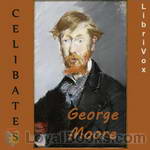 Celibates
Celibates
The author is considered the first great Irish writer of realist fiction and is said to have been an inspiration for James Joyce. Celibates is a novel of three characters: Mildred Lawson, John Norton and Agnes Lahens.They have nothing in common other than an absolute love of themselves and an inability to sympathize with others. In that vein, it constitutes a striking image of our own modern day self-absorbed society. (Introduction by James Carson) | |
By: Thomas Love Peacock (1785-1866) | |
|---|---|
 Headlong Hall
Headlong Hall
Headlong Hall is the first novel by Thomas Love Peacock, published in 1815 (dated 1816). As in his later novel Crotchet Castle, Peacock assembles a group of eccentrics, each with a single monomaniacal obsession, and derives humor and social satire from their various interactions and conversations. The setting is the country estate of Squire Harry Headlong Ap-Rhaiader, Esq. in Wales. | |
By: Arthur Machen (1863-1947) | |
|---|---|
 The Angels of Mons
The Angels of Mons
The Angels of Mons is a popular legend about a group of angels who supposedly protected members of the British army in the Battle of Mons at the outset of World War I. The story is fictitious, developed through a combination of a patriotic short story by Arthur Machen, rumours, mass hysteria and urban legend, claimed visions after the battle and also possibly deliberately seeded propaganda. | |
By: Cal Stewart (1856-1919) | |
|---|---|
 Uncle Josh's Punkin Centre Stories
Uncle Josh's Punkin Centre Stories
A collection of comedic short stories from the perspective of an old country man. | |
By: George Horace Lorimer (1869-1937) | |
|---|---|
 Letters from a Self-Made Merchant to His Son
Letters from a Self-Made Merchant to His Son
Being the Letters written by John Graham, Head of the House of Graham & Company, Pork-Packers in Chicago, familiarly known on 'Change as "Old Gorgon Graham," to his Son, Pierrepont, facetiously known to his intimates as "Piggy." George Horace Lorimer was an American journalist and author. He is best known as the editor of The Saturday Evening Post. | |
By: Francis William Bourdillon (1844-1912) | |
|---|---|
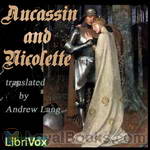 Aucassin and Nicolette.
Aucassin and Nicolette.
Aucassin and Nicolette is a medieval romance written in a combination of prose and verse called a “song-story.” Created probably in the early 13th century by an unknown French author, the work deals with the love between the son of a count and a Saracen slave girl who has been converted to Christianity and adopted by a viscount. Since Aucassin’s father is strongly opposed to their marriage, the two lovers must endure imprisonment, flight, separation in foreign lands, and many other ordeals before their ardent love and fierce determination finally bring them back together... | |
By: Moliere (1622-1673) | |
|---|---|
 The Imaginary Invalid
The Imaginary Invalid
The Imaginary Invalid is a three-act comédie-ballet by the French playwright Molière. It was first performed in 1673 and was the last work he wrote. The plot centers around Argan, the 'imaginary invalid' who is completely dependent on his doctors and wants to marry his daughter to a doctor against her will, so that he will always have medical care freely available to him. In an ironic twist of fate, Molière collapsed during his fourth performance as Argan on 17 February and died soon after. | |
By: Molière (1622-1673) | |
|---|---|
 Miser
Miser
The Miser is a comedy of manners about a rich moneylender named Harpagon. His feisty children long to escape from his penny-pinching household and marry their respective lovers. Although the 17th-century French upper classes presumably objected to the play's message, it is less savage and somewhat less realistic than Molière's earlier play, Tartuffe, which attracted a storm of criticism on its first performance. | |
By: Stephen Leacock (1869-1944) | |
|---|---|
 My Discovery of England
My Discovery of England
"In the course of time a very considerable public feeling was aroused in the United States and Canada over this state of affairs. The lack of reciprocity in it seemed unfair. It was felt (or at least I felt) that the time had come when some one ought to go over and take some impressions off England. The choice of such a person (my choice) fell upon myself. By an arrangement with the Geographical Society of America, acting in conjunction with the Royal Geographical Society of England (to both of whom I communicated my proposal), I went at my own expense."And from thence follow the impressions of Canadian political economist and humourist, Stephen Leacock, after a lecturing visit to England. | |
By: J. M. Barrie (1860-1937) | |
|---|---|
 Peter and Wendy
Peter and Wendy
Peter and Wendy tells the classic story of Peter Pan, a mischievous little boy who can fly, and his adventures on the island of Neverland with Wendy and her brothers, the fairy Tinker Bell, the Lost Boys, the Indian princess Tiger Lily, and the pirate Captain Hook. (Introduction modified from Wikipedia) | |
By: Alexander Pushkin (1799-1837) | |
|---|---|
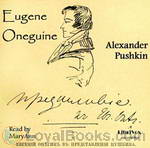 Eugene Onéguine
Eugene Onéguine
Eugene Onéguine is a classic of Russian literature, and its eponymous protagonist has served as the model for a number of Russian literary heroes (so-called superfluous men). It was published in serial form between 1825 and 1832. The first complete edition was published in 1833, and the currently accepted version is based on the 1837 publication.Almost the entire work is made up of 389 stanzas of iambic tetrameter with the unusual rhyme scheme "AbAbCCddEffEgg", where the uppercase letters represent feminine rhymes while the lowercase letters represent masculine rhymes... | |
By: Lord George Gordon Byron (1788-1824) | |
|---|---|
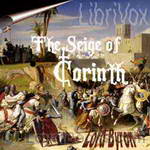 The Siege of Corinth
The Siege of Corinth
In this moving poem, Byron recounts the final, desperate resistance of the Venetians on the day the Ottoman army stormed Acrocorinth: revealing the closing scenes of the conflict through the eyes of Lanciotto - a Venetian renegade fighting for the Ottomans - and Francesca - the beautiful maiden daughter of the governor of the Venetian garrison: Minotti. | |
By: Various | |
|---|---|
 The Sturdy Oak
The Sturdy Oak
At a certain committee meeting held in the spring of 1916, it was agreed that fourteen leading American authors, known to be extremely generous as well as gifted, should be asked to write a composite novel....Third, to have the novel finished and published serially during the autumn Campaign of 1917.The carrying out of these requirements has not been the childish diversion it may have seemed. Splendid team work, however, has made success possible.Every author represented, every worker on the team, has gratuitously contributed his or her services; and every dollar realized by the serial and book publication of "The Sturdy Oak" will be devoted to the Suffrage Cause... | |
By: Henry Peterson (1818-1891) | |
|---|---|
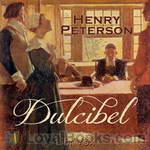 Dulcibel A Tale of Old Salem
Dulcibel A Tale of Old Salem
Dulcibel is a young, pretty and kind-hearted fictional character charged with Witchcraft during the infamous Salem Witch trials. During this time there is a group of "afflicted girls" who accuse Dulcibel and many others of Witchcraft, and during their trials show "undoubtable" proof that these people really are Witches. Will Master Raymond, Dulcibel's lover, be able to to secure Dulcibel's release from jail? Or will Dulcibel's fate be the gallows like so many other accused Witches of her time? | |
By: Owen Wister (1860-1938) | |
|---|---|
 Padre Ignacio, Or The Song Of Temptation
Padre Ignacio, Or The Song Of Temptation
Padre Ignacio has been the pastor of California mission Santa Ysabel del Mar for twenty years. In 1855 a stranger rides into the mission bringing news and a spiritual crisis. It's really more of a novella than a novel. | |
By: Maud Jean Franc | |
|---|---|
 Two Sides To Every Question: From A South Australian Standpoint
Two Sides To Every Question: From A South Australian Standpoint
'Two Sides to Every Question’: From a South Australian Standpoint is a meditation on poverty, wealth, and social aspiration set in the free settlement of Adelaide in pre-Federation Australia. The novel follows the lives of a cast of characters from different social classes as they negotiate the twists and turns in their respective fortunes. The newly-bereaved Alton family—an invalid widow and her two grown children, Tom and Nettie—sell their rural property and move to the slovenly back streets of the inner-city; they are determined to hold onto their dignity and values as they turn to earning a living for the first time... | |
By: Sewell Peaslee Wright (1897-1970) | |
|---|---|
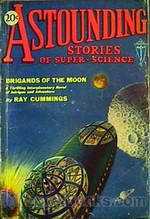 Astounding Stories 03, March 1930
Astounding Stories 03, March 1930
This is the third issue of the classic science fiction Astounding Magazine. It contains the opening chapters of a 4 part serialized novel by Ray Cummings, and stories by the prolific Capt. S. P. Meek, Will Smith and R. J. Robbins, Sewell Peaslee Wright and A. T. Locke. | |
By: Anthony Pelcher (1897-1981) | |
|---|---|
 Astounding Stories 04, April 1930
Astounding Stories 04, April 1930
The fourth issue of Astounding Stories continues Ray Cummings serial "Brigands of the Moon", along with pulp sci-fi stories by Capt. S. P. Meek, Anthony Pelcher and other authors. | |